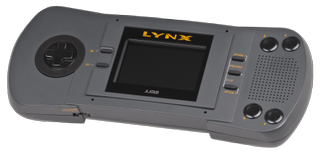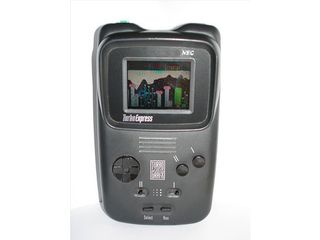21 Consoles And Handhelds That Crashed And Burned
Ouya: Hope For The Future

The history of video games is littered with consoles that were epic fiascoes. Most were just bad platforms that either lacked in performance, compelling software, or a true market niche. But some had a good chance at success that was spoiled by management issues, marketing gaffes, or a lack of relationships in the software development community.
This year was a historic one for consoles, with the second-most-popular Kickstarter project, Ouya, becoming the world’s first console financed by Internet users (to the tune of $8.5 million). It uses Google's Android 4.2 operating system, a Tegra 3 SoC, and a heavily free-to-play philosophy. Square Enix announced that it will port Final Fantasy III to the platform.
The console is set to ship early in 2013, but its success is far from guaranteed. We decided to dredge up a few corpses from the past to quench a little of the excitement surrounding this project. We present 20 console failures that have left their marks on history.
ColecoVision (1982)

Specifications
CPU: NEC Zilog Z80A (3.58 MHz)
RAM: 1 KB
ROM: 8 KB
GPU: Texas Instruments TMS9928A (256x192, 16 colors, 16 KB)
VRAM: 16 KB
Games: 8 KB, 16 KB, 24 KB, or 32 KB cartridges
Consoles sold
Estimates are around 2 million.
Stay On the Cutting Edge: Get the Tom's Hardware Newsletter
Get Tom's Hardware's best news and in-depth reviews, straight to your inbox.
Year production ended
1984
Reasons for failure
The video-game industry crashed in 1983 (game publishers’ stocks plummeted, investments were greatly reduced, game releases were canceled, the market was saturated, and a blasé general public was not showing much interest in new consoles). Many games were announced, but never marketed (Tunnels and Trolls is the best known). Finally, it was outperformed two years later by the NES, which cost about $100 less (around $150, taking inflation into account).
Vectrex (1982)

Specifications
CPU: Motorola MC68A09 (1.5 MHz)
RAM: 1 KB
ROM: 8 KB (4 KB used by MineStorm)
Games: 32 KB cartridge
Console shipped with a Samsung 240RB40 vector display.
Consoles sold
Figures were never published, but warehouses full of inventory forced the manufacturer to sell at a loss.
Year production ended
1984
Reasons for failure
Crash of the video-games market in 1983, the monochrome display required color filters, whereas the Atari 2600 and 5200 could be connected to a color TV set, the general public never got interested, and the manufacturer, Milton Bradley, was bought out by Hasbro, ending the project.
Atari 7800 (1984)

Specifications
CPU: Atari SALLY 6502 (1.79 MHz)
RAM: 4 KB
ROM: 4 KB
GPU: MARIA (7.16 MHz, 320x240, 25 colors out of 256)
Games: 48 KB cartridge
Consoles sold
3.77 million
Year production ended
1992
Reasons for failure
Sound quality was little better than what was current in 1977 with the Atari 2600 VCS and Nintendo had signed exclusivity agreements with many developers for its NES, limiting Atari's possibilities.
PC Engine/TurboGrafx-16 (1987)

Specifications
CPU: Hudson Hu6280 (7.8 MHz)
RAM: 8 KB
GPU: Hudson HuC6260 16-bit (512x256, 64 KB, 256 out of 512 colors)
Games: HuCard cartridge, or CD-ROM with optional CD player (TurboGrafx-CD)
The smallest home video game console ever produced (5.5” × 5.5” × 1.5”)
Consoles sold
10 million
Year production ended
1995
Reasons for failure
Its floating-point performance fell short of expectations, there were very few games from third-party developers, the market was alreadysaturated by Nintendo and Sega, and, at least in France, the distributor (Sodipeng) went bankrupt.
Atari Lynx (1989)

Specifications
CPU: Mikey MOS 65SC02 (4 MHz, 8-bit)
ROM: 512 bytes
RAM: 64 KB
GPU: Suzy (16 MHz, 16-bit, 160x102, 16 colors from a palette of 4096 colors)
Games: 128 KB, 256 KB, or 512 KB cartridge
The world’s first handheld console with a color display
Ambidextrous design
Consoles sold
5 million
Year production ended
1995
Reasons for failure
There weren't enough units sold to attract developers, the games had to be copied from the cartridge to RAM before playing, limiting available resources and slowing the loading time, and it was priced much higher than Nintendo's Game Boy, which outsold it. Moreover, Atari suffered from limited availability at launch due to the platform's complexity, which also drew a lot of power and used up batteries quickly.
Amstrad GX4000 (1990)

Specifications
CPU: Zilog Z80A (4 MHz, 8-bit)
RAM: 64 KB
ROM: 32 KB
GPU: Unknown (640x200, 12-bit, 32 colors out of 4096)
Games: Cartridges (128 KB to 512 KB)
Consoles sold
150 000
Year production ended
1991
Reasons for failure
There were only 25 games in its catalog, which were mostly ported Amstrad CPC games. The GX4000 employed an 8-bit processor, whereas the SNES and Mega Drive were 16-bit designs. Finally, there were no major technical improvements over the Amstrad CPC (already outmoded at the time), which resulted in poor graphics.
Commodore 64GS (1990)

Specifications
CPU: MOS Technology 8500 (0.985 MHz, 8-bit)
RAM: 64 KB
ROM: 20 KB (7 KB used for KERNAL, Commodore's operating system core)
GPU: MOS Technology VIC-II MOS 8569 (16 colors, 320x200)
Games: Cartridges, unknown capacity
Consoles sold
Unknown, but relatively low given its failure and its being launched in the UK and Holland only
Year production ended
1992
Reasons for failure
With no keyboard, the great majority of Commodore 64 games were incompatible. Worse, theCheetah Annihilator joystick was of very poor quality. At launch, there were only nine original games; the rest were ports. At the end of the day, the Commodore 64GS amounted to little more than a watered-down Commodore 64.
PC Engine GT/TurboExpress (1990)

Specifications
CPU: Hudson Hu6280 (7.8 MHz)
RAM: 8 KB
GPU: Video Display Processor and Video Color Encoder, both 16-bit
VRAM: 64 KB
Display: 400x270, 481 colors out of 512
Games: HuCard TurboGrafx-16 (PC Engine) cartridge
Consoles sold
1.5 million
Year production ended
1995
Reasons for failure
This was the first handheld to use home gaming console cartridges, five years before the Sega Nomad. Unfortunately, its major technological advances compared to other consoles proved to be a disadvantage. It was too expensive and consumed 6 AA batteries in a few hours. Ultimately, theuse of games originally intended for TV screens was not always successful. For instance, on-screen text in RPGs was too small to read. Adding insult to injury, the first units had defective pixels in the screen and low-quality capacitors that caused problems with sound.
Philips CD-i (1991)

Specifications
CPU: 68070 CISC (15.5 MHz, 16-bit)
RAM: 1 MB
GPU: SCC66470 (768x560, 32 768 colors out of 16.7 million)
Games: CD-ROM
Consoles sold
570 000
Year production ended
1998
Reasons for failure
The controller was shaped like a remote control and very poorly designed. Moreover,games were pretty bad, too (including Link: The Faces of Evil and Zelda: The Wand of Gamelon). You didn't get 3D, but still paid a premium price. In reality, then, this was a living room media player masquerading as a console.
Commodore CDTV (1991)

Specifications
CPU: Motorola 68000 (7.16 MHz)
RAM:1 MB
ROM: 2 x 256 KB
GPU: Amiga Enhanced Chipset (12-bit color at 320x512 or 640x512i if display was limited to 16 colors)
Games: CD-ROM
Consoles sold
Fewer than 60 000
Year production ended
1993
Reasons for failure
AmigaOS 1.3 was used instead of version 2.0, which had a better interface. Also, consumers chose to wait for the arrival of the CD player option on the Amiga 500, which used the same chips as the Commodore CDTV (a living room-only media player). For what it was, then, the selling price was too high. Finally, the console's specs weren't particularly impressive, and developers never got on-board with it.
-
suture kryzzayHahha N-Gage that wasn't that bad I think. I knew quite a few people that had one.Reply
True facts, i had one for years, hek i still have it, but the battery's dead.
My first "smartphone" with serious multitasking.
I could listen to radio, have msn running, and play worms ONLINE simultaneusly
Well the drawback, everyone maked fun of me when i was on the phone =D
-
I would say the PSVITA is a bit of a troll - comparing the sales of a handheld that is essentially new vs. the 3DS which has been around now for at least 4 or 5 years now - however it seems to be a foregone conclusion that handheld consoles in general are dying and Sony is fighting a losing battle with this one. That said, the PSVITA really is a very, very nice handheld. I was quite impressed with the graphics and speed when I played with one but like most people I doubt I'd actually buy one.Reply
-
Nintendo Maniac 64 ReplyI would say the PSVITA is a bit of a troll - comparing the sales of a handheld that is essentially new vs. the 3DS which has been around now for at least 4 or 5 years now
3DS has only been around for just under 2 years... -
Orion1024 What...no NUON? That's one of the biggest failures in gaming history (but one of the favorites in my collection). It's not strictly a console, but games were a major selling point. Jaguar was a decent system with some great games that rarely get mentioned, like Rayman or Power Drive Rally. The only real stinker in this list (from what I've owned) is the Game.com. It's OS would crash frequently and the games sucked. However, the final revision of this handheld was smaller and did feature a built-in LED light for the screen...FWIW.Reply
Most Popular







